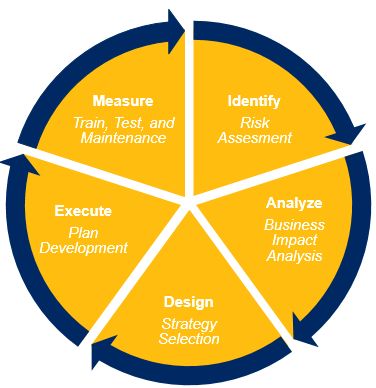Preparedness – a critical factor for resilience
On March 11, 2020, the World Health Organization (WHO) declared the novel coronavirus (COVID-19) a pandemic with 7361 confirmed cases in Canada and 194,021 cases globally (as at March 19, 2020).2
COVID-19 has disrupted the way we operate in unprecedented ways impacting our communities, businesses, and governments. We are seeing COVID-19 as a recurring headline and a regular agenda item at business meetings as well as the dinner table. However, instead of using the word that has been given too much attention, the WHO's Director-General emphasized the need to use the word that matters much more – "preparedness."3
Preparedness is a critical factor in enabling business continuity and resilience during times of disruption. It is the state of readiness and the ability to respond to risks that negatively impact objectives. Now, more than ever is the time to prepare and assess your business continuity plan so that you are in a better position to protect your people, processes and systems.

Figure 1: Novel Coronavirus (COVID-19) Situation published by the World Health Organization, as of March 18, 2020
Five considerations for improving business resilience
As businesses navigate the ongoing COVID-19 crisis, we have prepared a summary of key areas to consider when assessing your business and planning for recovery.
Protect your people
Protect and prepare your people by providing up to date information and policies. Businesses have already started to activate mandatory work from home policies and travel policies. The Government of Canada provides further guidance and the latest updates on COVID-19 and can be found here.
Identify critical processes
Establish a Business Continuity Plan (BCP) that identifies critical business activities that keep the business in operation and the impacts of the disruption. A business continuity plan involves a risk assessment and a business impact analysis to identify controls that enable business resilience.
Third-party risks
Identify third parties/outsourced contractors and understand their business resilience. If you are using third parties, such as IT providers, you are also reliant on their business continuity. You will want to understand how robust their business processes are and their ability to continue business when disruption occurs.
Communication
Review and update your internal and external means of communication, including staff contact lists, email distribution lists, client/supplier/customer contacts to ensure it is current and complete. Communicate often to maintain engagement with staff.
Technology
Scammers are taking advantage of the pandemic by sending fraudulent emails that attempt to trick you into revealing your personal information or clicking on malicious links or attachments. The emails are using social engineering techniques to appear credible (such as WHO and government logos). Educate and raise awareness of potential scams to your people and protect your technology systems and devices. Ensure current anti-spam, anti-spyware and anti-virus software are installed.
What is a Business Continuity Plan (BCP)?
Business continuity is about having a plan to deal with difficult situations so the business can continue to function with as little disruption as possible. In accordance with the international standard for business continuity management (ISO 22301), by planning, establishing, implementing, operating, monitoring, reviewing, maintaining and continually improving a business continuity management system, an entity will be better prepared and more confident to handle the disruption of any type. The lifecycle of a BCP is illustrated in Figure 2.

Figure 2: Business Continuity Plan Lifecycle
The Risk Assessment involves the participation of all key stakeholders to carefully examine the risks of the business, both internally and externally, and to determine the people, processes and system controls that are necessary to address these risks. Whether it be supply chain effects or shifts in consumer behavior, the risks of the current pandemic are evident. It is also essential to conduct a Business Impact Analysis, which involves scenario analysis to determine estimated response times and resources required to address the potential disruptions. After designing the strategy, now, more than ever, during a real pandemic scenario, is the time to execute and test the BCP.
No matter the size of your business, preparing for the unexpected is critical to your business resilience and your ongoing success.
Footnotes
1The Government of Canada, Confirmed Cases of COVID-19
2 The World Health Organization, Novel Coronavirus Situation (COVID-19), 2020
The content of this article is intended to provide a general guide to the subject matter. Specialist advice should be sought about your specific circumstances.

